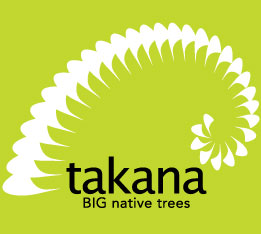The concept is known today. Recommendations relating to ecosourcing can be found in almost every set of vegetation restoration guidelines, especially those produced by local councils. They can be found as rules in District Plans eg those of the Rodney District Council. There is little doubt that ecosourcing, when applied on a broad scale, increases the likelihood of survival. Locally sourced plant material will generally survive better than stock sourced from a considerable distance.
The way in which the practice of ecosourcing is applied has a direct influence on the cost of native plant production and the availability of plants. The issue of greatest concern, expressed by many practitioners, is not so much the validity of the concept of retaining genetic integrity, but rather the scale and strictness with which it should be applied in practice.
- How far away is “too far away” for seed collection, and should one rule apply to all species?
- Should ecosourcing be applied with the same rigidity in all landscapes?
A wide range of recommendations and policies exists about distance between source and planting site, and where ecosourcing should be enforced:
- Godley (1972) recommended sourcing “from the same patch of bush”.
- Wilcox and Ledgard (1983) recommended that Ecological Districts should be used to define suitable seed collection areas (there are 260 Ecological Districts in NZ)
- Lands & Survey and Department of Conservation policy in the 1980s and early 1990s stated that Scenic Reserve plantings should be sourced within 1km.
- Wrigh and Cameron (1990) maintained that even small amenity planting around buildings (eg information centres and toilet blocks) should be derived from local plant stock.
- The Rodney District Council Plan rules that all riparian revegetation must contain native plants sourced from within the Ecological District.
- Manukau City has a three stage approach: (i) selection from the site itself; (ii) selection within the same catchment; (iii) selection from the Ecological District.
- Marlborough District Council has developed ecosourcing zones. These reflect the small and fragmented character of many plant populations.
Internationally and here in New Zealand botanists are debating the subject of genetic integrity, especially in terms of distance between source and planting site. Until recently, very little research has been carried out to substantiate policies regarding suitable collection distances. Collection of seed within the same Ecological District is recommended in many regions of New Zealand.
Questions can be asked about this procedure:
- is there good scientific research to support the policy?
- does this approach contribute to protection of genetic integrity of our native plant populations?
- is a single generic policy applicable to all species in all locations?
New Zealanders have a history of moving plants around the country.
- Maori have shifted species such as cabbage tree and karaka (Corynocarpus laevigatus) for cultural purposes.
- Gardeners, tree enthusiasts and foresters have continually shifted species: kauri (Agathis australis) can be found growing in Dunedin and Stewart Island; Central North Island rimu (Dacramedium cupressinum) has been established in Westland.
- Roadside and early restoration project areas contain plants that were not sourced locally.
Have we already caused irreversible damage? Does this mean that adherence to a strict ecosourcing policy is a waste of time? What ecological damage has been caused, and what hard will be done if we dont ecosource?
Since pre-human times, much of New Zealand’s lowland forest became fragmented and genetically isolated. This is a result of geographic separation and the loss of dispersal agents. It could be argued that ecosourcing, as applied today, is sustaining a narrower level of genetic diversity than would have occurred under a natural system. is there a reasonable case for supporting increased genetic mixing between plant populations to restore greater population resilience?
Our Australian neighbours may be showing us the way. They are utilising DNA finger printing technology to determine the degree to which plant populations can be genetically differentiated. Species are being grouped into three broad provenance classes: narrow, local and regional, to guide decisions about appropriate sourcing zones.



